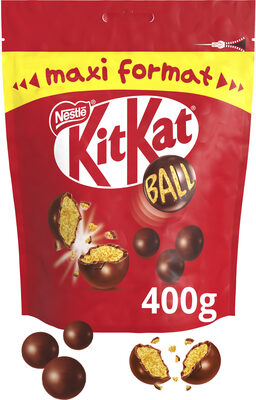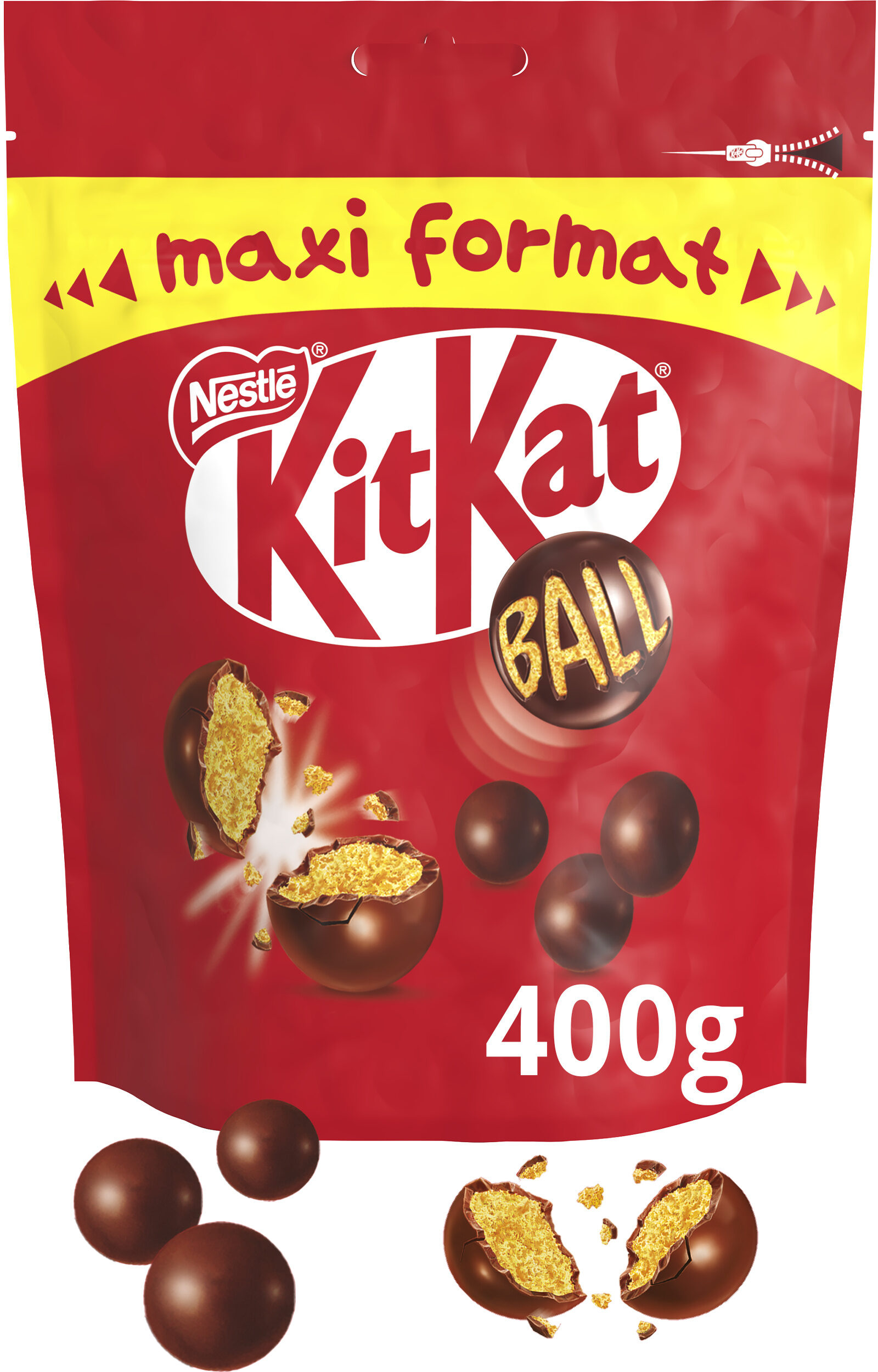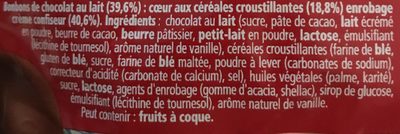KITKAT Ball, Billes au chocolat au Lait, 400g - 400 g
Aquesta pàgina del producte no està completa. Podeu ajudar a completar-la editant-la i afegint-hi més dades a partir de les fotos ja disponibles, o fent-ne més amb l'aplicació de androide o iPhone / iPad. Gràcies!
×
Algunes de les dades d’aquest producte les ha proporcionat directament el fabricant NESTLE FRANCE. - Servei al client: Formulari de contacte 0 809 400 412 (service gratuit + prix de l'appel)
Codi de barres: 8000300280951 (EAN / EAN-13)
Nom comú: Bonbons de chocolat au lait (39,7%) : cœur aux céréales croustillantes (18,8%) enrobage crème confiseur (40,7%)
Quantitat: 400 g
Empaquetament: en:Bag, en:pack, fr:Sachet en plastique
Categories: Snacks, Aperitius dolços, Cacau i derivats, Llaminadures, Barretes, Caramels de xocolata, Bombons, en:bars-covered-with-chocolate
Etiquetes, certificacions, premis:
Punt verd, en:Nestlé Cocoa Plan, Comptador Nutricional, Grau E NutriScore, Mantega de cacau pura, Aliança Tropical, Triman


Botigues: Carrefour, carrefour.fr
Matching with your preferences
Entorn
Empaquetament
Transport
Espècies amenaçades
Etiquetes
Altres dades
Preparació: Produit prêt à consommer
Condicions de conservació: A conserver au frais et au sec.
Servei al client: Nestlé France, 34-40 rue Guynemer 92130 Issy-les-Moulineaux
Report a problem
Fonts de dades
El fabricant NESTLE FRANCE utilitza Equadis per transmetre automàticament dades i fotos dels seus productes.
Producte afegit per kiliweb
Última modificació de la pàgina del producte per telperion87.
La pàgina del producte, també editada per acuario, driveoff, ecoscore-impact-estimator, margot-luis, mylabelcontributors, openfoodfacts-contributors, org-app-elcoco, org-nestle-france, packbot, roboto-app, teolemon, thaialagata, yuka.U3FjYktQMHZqS2NsdnNZZy9DM3I1L2xyL2FlN2RuK0dNOEVRSVE9PQ, yuka.WDZrYUF2a0hucVl4dmZjbHhSendvSXBKK0lHcldGS1JBTWNNSVE9PQ, yuka.ZjV0Zk9va0xscWNZbWZjbndFM0grZTVSbUxLa1l6cU5Edm9BSVE9PQ, yuka.sY2b0xO6T85zoF3NwEKvlktWecP9hRvcLDnTtm6q_cuELI3BaIFw7Jrqa6s.









